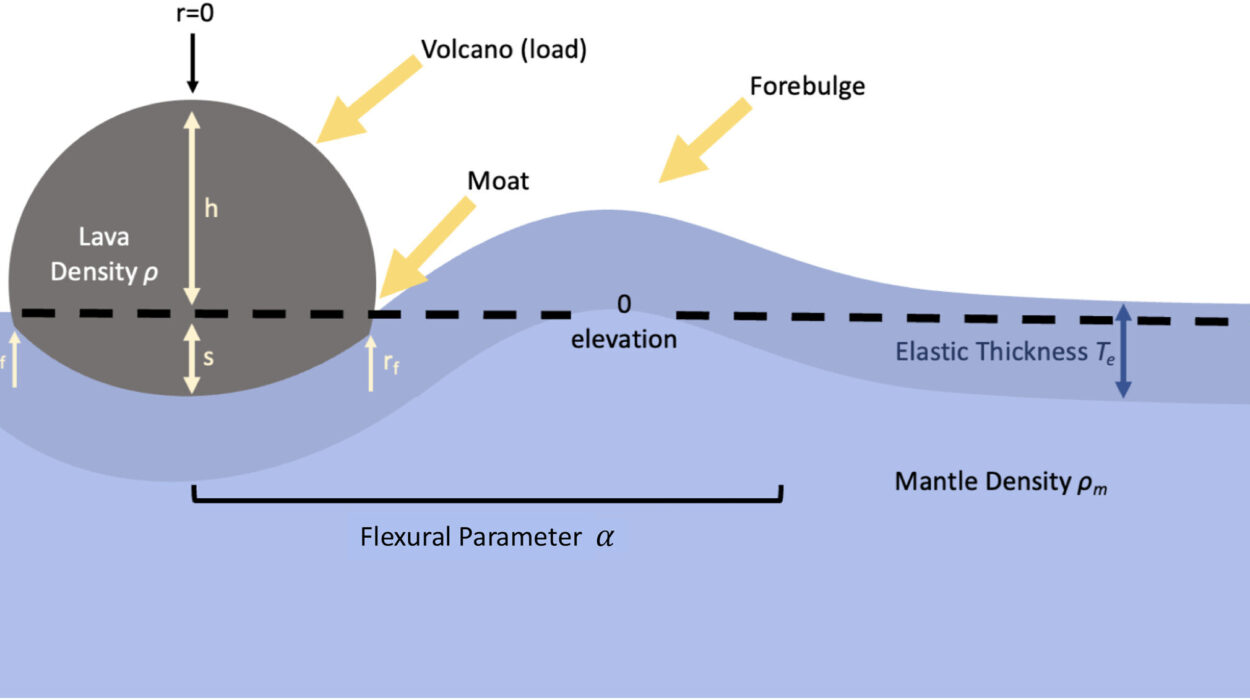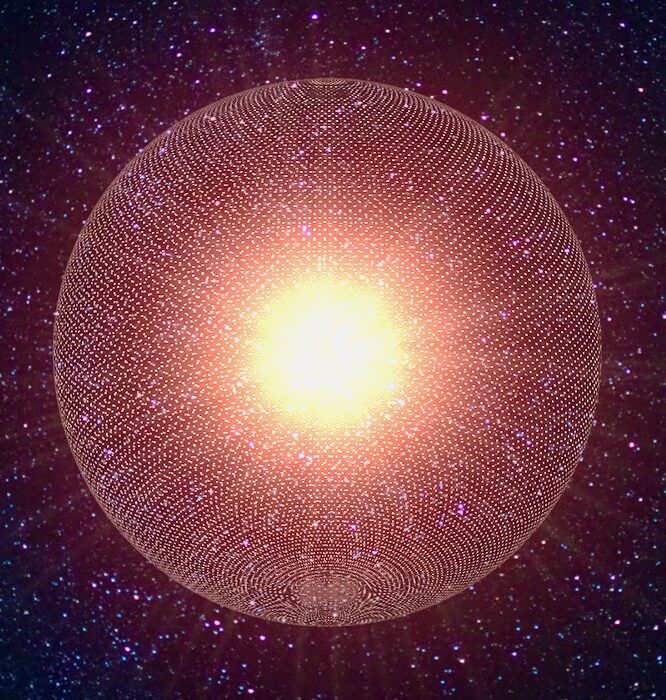Dark matter is one of the most enigmatic and puzzling aspects of modern physics and cosmology. While we can observe its gravitational effects on galaxies and other cosmic structures, the actual composition and properties of dark matter remain a mystery. It’s an invisible, undetectable entity that exerts its influence across the vast stretches of space, yet we can’t see it, touch it, or directly interact with it. Despite its elusiveness, scientists have long known that dark matter constitutes about 85% of the universe’s total mass and is essential to the workings of the cosmos. Its gravitational effects are visible in the way galaxies rotate, the phenomena of gravitational lensing, and fluctuations in the Cosmic Microwave Background (CMB). But now, new research suggests a novel and potentially groundbreaking way to detect dark matter, bringing us closer to understanding one of the most profound mysteries of the universe.
The Age-Old Mystery of Dark Matter
Astronomers have long been aware of dark matter’s existence, primarily through its gravitational effects. Observations of galaxies show that the outer stars of galaxies rotate much faster than expected based on the visible matter alone, implying the presence of an unseen mass that exerts gravitational pull. Additionally, the phenomenon of gravitational lensing, where light from distant stars and galaxies is bent by the gravitational fields of intervening objects, also hints at the unseen mass of dark matter. Similarly, the study of the Cosmic Microwave Background (CMB) radiation, the afterglow of the Big Bang, reveals minute fluctuations that are attributed to dark matter’s presence. These clues point to the fact that dark matter is not just a figment of theoretical models—it is a real and pervasive force that shapes the universe.
Yet, despite all the evidence, the fundamental nature of dark matter has remained elusive. What exactly is dark matter? Is it made of exotic particles we have yet to detect? Could it be composed of primordial black holes, or axions, or weakly interacting massive particles (WIMPs)? While there are many hypotheses, no definitive answer has emerged. The research paper titled “Dark Matter (S)pins the Planet,” available on the arXiv preprint server, explores a fascinating new avenue for detecting dark matter: its potential effects on planetary bodies.
The New Frontier: Dark Matter Planetary Capture
Dark matter planetary capture is a concept that builds on previous research suggesting that planets could, in theory, capture dark matter particles over time. As planets move through the dark matter halo surrounding galaxies, their gravity could attract dark matter particles, drawing them into their interiors. This is not a simple process, as the density of dark matter is very low, making it incredibly difficult to detect. However, the cumulative effects of dark matter interacting with a planet over billions of years could, in theory, leave observable traces that scientists could detect.
The central thesis of the research paper is that planets, having interacted with the dark matter halo for billions of years, serve as long-term probes of dark matter’s effects. These interactions, while subtle, could result in measurable changes in a planet’s temperature, rotation, and atmospheric properties. The authors argue that by studying these changes, scientists could glean valuable information about dark matter, its properties, and how it interacts with matter on a planetary scale. This approach could prove to be a revolutionary method of detecting dark matter, bypassing some of the challenges associated with direct detection on microscopic scales or through cosmic observations.
The Physics Behind Dark Matter Capture
The research focuses on how dark matter interacts with planets in ways that might lead to observable consequences. Though dark matter does not interact with ordinary matter (known as baryonic matter) through electromagnetic forces, it can still have subtle interactions, such as scattering and even annihilation, that lead to the deposition of energy into planetary bodies.
One of the key mechanisms through which dark matter affects planets is through quantum tunneling, a phenomenon where particles can pass through energy barriers that they would otherwise be unable to surmount. When dark matter particles enter a planet, they can scatter off of planetary particles, imparting kinetic energy to them. This interaction results in heat generation, causing a rise in the planet’s temperature. Similarly, when dark matter particles annihilate each other, this process can release energy, further contributing to heating the planet’s interior.
Additionally, the energy input from dark matter could alter a planet’s rotation. As dark matter particles interact with the planet, they can cause subtle changes in the planet’s angular velocity, making it rotate slightly faster or slower over time. While these changes are difficult to measure due to the multitude of other forces at play, the cumulative effect of dark matter heating and its impact on rotational dynamics could become detectable with sufficiently sensitive instruments.
Simulating Dark Matter Effects on Exoplanets and Earth
In their study, the authors of the research paper simulate the effects of dark matter capture on several confirmed exoplanets, including notable ones such as 55 Cancri d (also known as Lipperhey) and Epsilon Eridani b. These exoplanets are of particular interest to scientists searching for potentially habitable worlds, as their characteristics make them good candidates for habitability studies.
The research extends beyond just exoplanets, however. It also applies the dark matter planetary capture model to familiar planetary bodies like Earth and Jupiter. The authors argue that understanding the influence of dark matter on planetary systems could offer new insights into how exoplanets might evolve and how we might assess their habitability in the future.
The model developed by the researchers suggests that the energy provided by dark matter heating is not entirely converted into temperature but is instead distributed according to the planet’s intrinsic properties. These properties include mass, radius, and temperature, as well as the planet’s current state, including its rotation rate. This nuanced approach allows scientists to predict how dark matter might affect a planet over both short and long time scales.
Earth’s Potential Dark Matter Heating: A Look at the Numbers
The idea that dark matter could affect Earth’s properties is an intriguing one. According to the research, the combined energy input from dark matter and the Sun could lead to a gradual increase in Earth’s surface atmospheric temperature. Over 100 years, the temperature might increase by about 0.015 K (15 hundredths of a degree Kelvin), and over 1000 years, that increase could rise to 0.15 K. While these changes are subtle, they could provide valuable clues about dark matter’s influence on planetary bodies.
In addition to temperature changes, dark matter could also accelerate the rotation of Earth. The study predicts that over 100 years, dark matter heating could shorten Earth’s rotation period by about 12 seconds. Over the course of a millennium, this effect could accumulate to 120 seconds (or 2 minutes). These subtle changes in Earth’s rotational period, while small, might be detectable with modern ground-based measurement techniques, offering another way to indirectly observe dark matter’s presence.
Implications for Exoplanet Habitability
One of the most exciting potential applications of this research is its impact on the study of exoplanet habitability. As humanity looks for a “second home” in the universe, understanding the factors that influence the habitability of distant worlds becomes increasingly important. The effects of dark matter on planetary systems, particularly its impact on temperature and rotation, could offer a novel way to assess the potential for life on other planets.
For example, a planet’s ability to maintain stable liquid water, a critical ingredient for life as we know it, depends on its thermal conditions. If dark matter heating significantly alters the temperature or rotation of a planet, it could have profound effects on its ability to support life. The study suggests that future searches for habitable exoplanets should take dark matter’s potential effects into account when evaluating whether a planet might have the right conditions for life to thrive.
The Future of Dark Matter Research
As scientists continue to grapple with the nature of dark matter, the research paper “Dark Matter (S)pins the Planet” opens up new possibilities for studying this elusive force. By using planetary systems as natural laboratories, we may be able to gather valuable data on dark matter’s properties and its effects on the physical characteristics of planets. While direct detection of dark matter remains one of the most challenging goals in physics, this new approach offers an exciting avenue for expanding our understanding of the universe and the unseen forces that shape it.
In the future, as humanity expands its search for life beyond Earth and considers the prospect of interplanetary colonization, dark matter’s effects on planetary systems could provide crucial insights into the habitability of distant worlds. Whether dark matter ultimately turns out to be made of WIMPs, axions, or some other exotic particle, the ongoing quest to understand its role in the universe will undoubtedly continue to inspire generations of scientists, pushing the boundaries of our knowledge and our exploration of the cosmos.
Reference: Haihao Shi et al, Dark Matter (S)pins the Planet, arXiv (2025). DOI: 10.48550/arxiv.2503.17206






